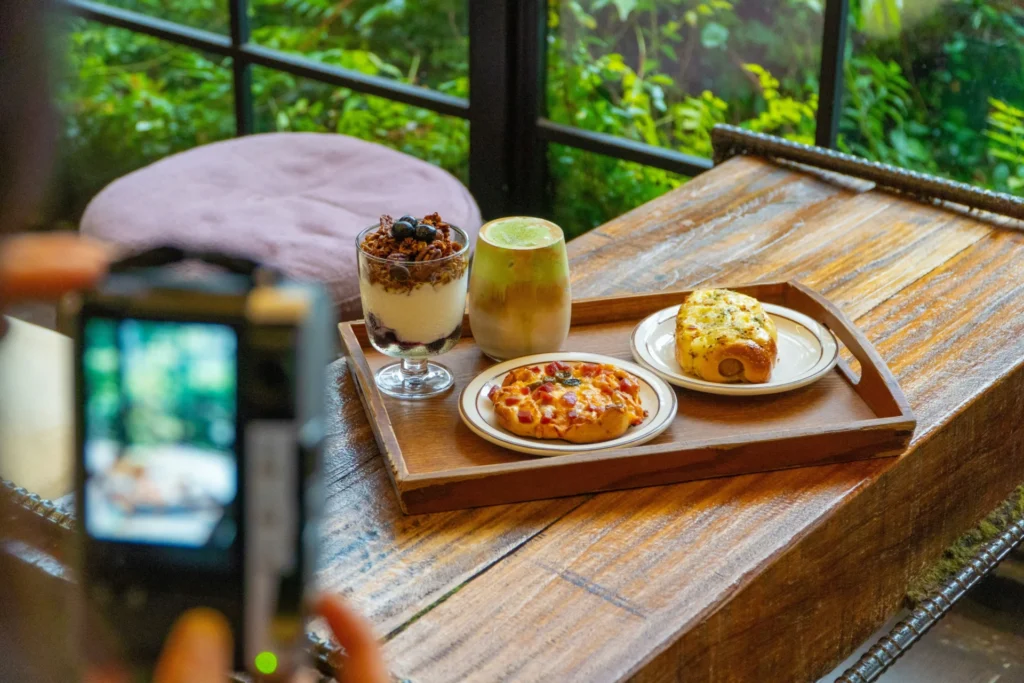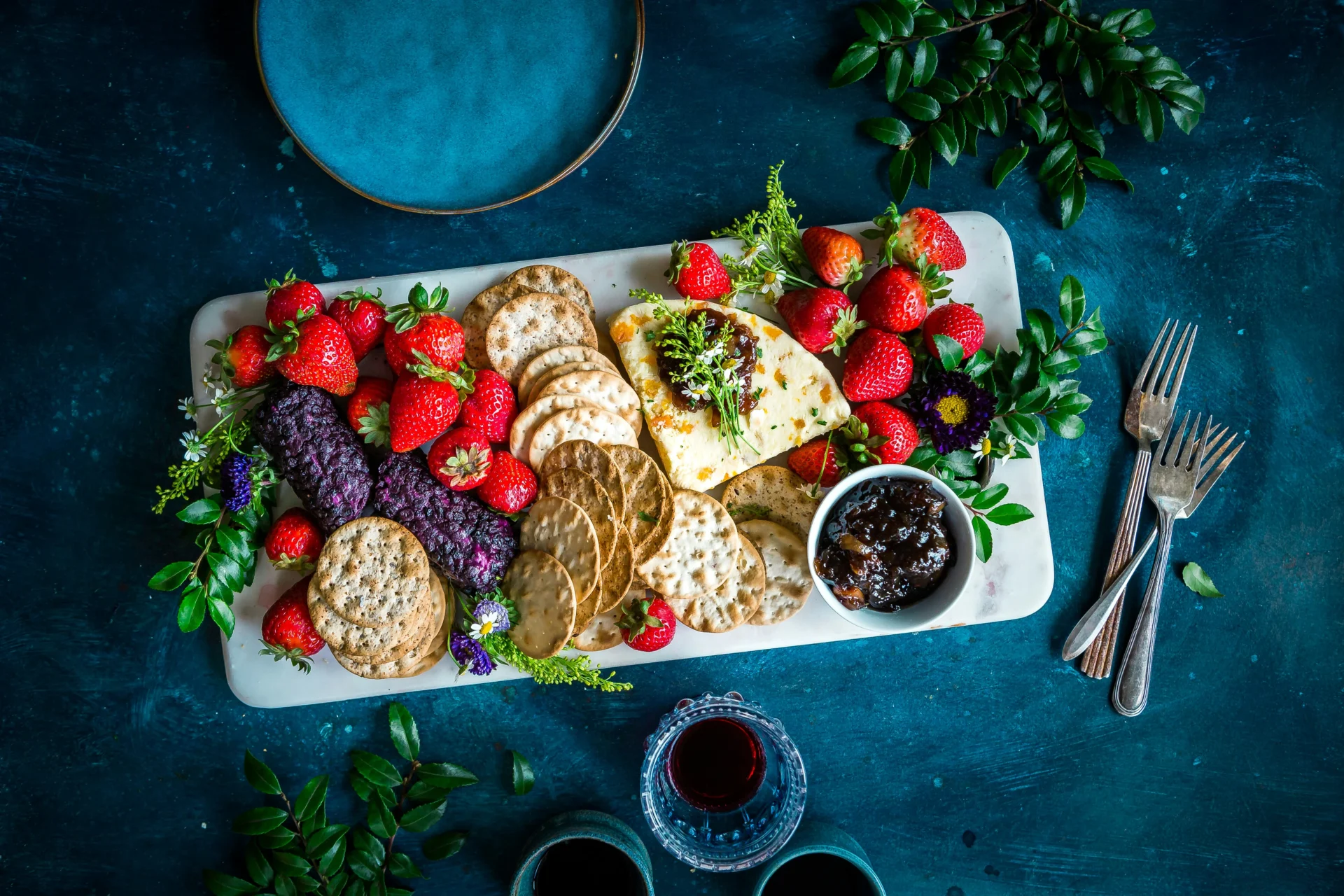High-quality images are essential for success in the food industry. Food photography marketing attracts customers, strengthens brand identity, and boosts engagement. Stunning visuals create emotional connections that influence purchasing decisions. A well-planned strategy ensures consistency across social media, websites, and advertisements. Businesses that invest in compelling food imagery gain a competitive edge. Strong visuals can turn casual viewers into loyal customers.
Effective food photography requires more than just a good camera. Composition, lighting, and styling work together to create visually appealing images. Strategic placement of elements directs attention and enhances storytelling. Consistent branding builds trust and recognition among consumers. Mastering these techniques helps businesses maximize the impact of their visuals. Investing in professional photography elevates a brand’s overall presence.
This article explores key strategies for creating and using high-quality food images. Choosing the right equipment ensures professional results. Leveraging user-generated content and influencer collaborations increases reach. Optimizing images for digital platforms improves visibility and engagement. These techniques help brands stand out and drive sales. A strong visual strategy enhances customer experience and retention.
Understanding the Role of Food Photography in Marketing
Images are powerful tools for capturing consumer interest and influencing purchasing decisions. High-quality food photography enhances brand credibility and helps build emotional connections with customers. Studies show that visually appealing content leads to higher engagement rates on social media platforms. In food photography marketing, businesses must create images that evoke cravings and reinforce their brand identity. A well-crafted visual strategy can set a brand apart from competitors and drive long-term success.
To leverage visuals effectively, businesses must ensure consistency across all marketing channels. This means maintaining a cohesive color palette, style, and composition in all images. Consumers associate visual consistency with professionalism and trustworthiness. Brands should invest in high-resolution images that highlight the freshness and appeal of their products. By prioritizing visual quality, businesses can strengthen their food photography marketing efforts and attract a loyal customer base.
Engaging storytelling is another crucial element in visual marketing. A single image should convey the experience of enjoying the dish, from its texture to its aroma. Creative compositions and lifestyle shots help showcase food in an enticing way. Incorporating human elements, such as chefs preparing meals or customers enjoying dishes, adds authenticity. These strategies make food photography marketing more compelling and relatable to potential customers.
Choosing the Right Equipment for Professional Results
Investing in the right equipment is essential for producing high-quality food images. A good camera with a high-resolution sensor ensures sharp and detailed photos. Many food photography marketing professionals recommend DSLR or mirrorless cameras for optimal control over settings. A macro lens is also useful for capturing close-up shots that highlight textures and ingredients. Choosing the right equipment lays the foundation for visually stunning and marketable food images.
Lighting is another critical factor in food photography. Natural light provides soft, flattering illumination that enhances the visual appeal of dishes. However, artificial lighting setups, such as softboxes or ring lights, can help maintain consistency in controlled environments. Proper food photography lighting eliminates harsh shadows and highlights the best features of the food. In food photography marketing, mastering lighting techniques is key to producing eye-catching visuals.
Stability and composition tools further enhance image quality. Tripods prevent camera shake and allow for precise framing, while reflectors help balance light. Backgrounds and props also play a significant role in setting the right mood for food images. Selecting complementary surfaces, plates, and garnishes ensures that the food remains the focal point. By using the right equipment and accessories, businesses can elevate their food photography marketing campaigns.
Mastering Composition and Styling Techniques
Composition is a fundamental aspect of creating visually appealing food images. The rule of thirds helps frame dishes in a way that draws attention to key elements. Using leading lines and negative space can further enhance the visual balance of an image. In food photography marketing, thoughtful composition ensures that images are engaging and memorable. Properly arranged elements guide the viewer’s eye and create a more professional aesthetic.
Styling is equally important in making food look appetizing. The choice of props, plate arrangement, and color contrast affects the overall impact of an image. Fresh ingredients, garnishes, and strategically placed utensils add to the composition’s appeal. Keeping the dish as the central focus prevents distractions and strengthens branding. Well-styled food images enhance food photography marketing efforts by making dishes more irresistible to consumers.
Editing techniques refine the final presentation of food images. Adjusting brightness, contrast, and saturation enhances colors and textures. Post-processing software, such as Adobe Lightroom or Photoshop, helps remove imperfections and maintain consistency. Subtle enhancements can make a significant difference in the overall quality of an image. With the right styling and editing techniques, food photography marketing becomes more effective and visually striking.
Using Natural and Artificial Lighting to Enhance Images
Lighting is essential for enhancing the effectiveness of food photography in marketing. Natural light brings out authentic colors and textures, giving photos a warm and inviting feel. On the other hand, artificial lighting ensures consistency in controlled environments like restaurants or studios. Tools such as softboxes, LED panels, and reflectors help diffuse and direct light, optimizing the visual appeal. By carefully balancing natural and artificial light, food images maintain a vibrant and captivating quality.
Shadows and highlights can make or break a food photograph. Positioning light sources at the right angles prevents harsh shadows and excessive glare. Using diffusers helps soften bright lights, creating a more natural and appealing look. In food photography marketing, a well-lit image conveys freshness and quality, making dishes more enticing. Experimenting with different lighting techniques enhances the depth and texture of images.
Playing with light temperature also adds to the mood and appeal of food photography. Warm lighting can make dishes look rich and comforting, ideal for showcasing baked goods or hearty meals. Cooler tones work well for fresh ingredients like seafood or salads, emphasizing their crispness and vibrancy. Adjusting white balance ensures colors remain true to life, preventing unwanted color casts. By mastering lighting techniques and making thoughtful adjustments, food photographers can create images that not only attract attention but also evoke cravings and emotional connections with their audience.

Creating Engaging Food Videos
Video content grabs attention in modern food photography marketing. Short, engaging videos attract potential customers and build authenticity. Slow-motion shots and time-lapses add excitement. Businesses use video on social media, websites, and ads to increase reach and engagement. The emotional connection created by video content can significantly boost brand recall. Well-produced videos can turn passive viewers into active customers.
Dynamic video content strengthens food photography marketing. Showcasing preparation creates anticipation. High-quality visuals and sound enhance viewing. Behind-the-scenes glimpses build transparency. Video increases brand awareness and customer loyalty. Providing subtitles and captions ensures accessibility for a wider audience. Engaging video elements make food more enticing and memorable.
Strategic video marketing strategy drives campaign success. Optimize videos for various platforms, considering aspect ratios and resolutions. Focus on storytelling to connect with the audience. Include clear calls to action. Consistent posting and engagement maintain momentum. Video content is a powerful tool. Consider incorporating trending audio to increase viral potential. Well-planned video strategies keep brands relevant and competitive.
Utilizing User-Generated Content to Enhance Credibility
User-generated content (UGC) builds trust in food photography marketing. Customers sharing photos creates community. Featuring UGC on brand platforms amplifies authenticity and boosts engagement. Customer-created visuals strengthen relationships and attract audiences. Authentic content improves brand and online reputation. Highlighting diverse customer experiences enhances inclusivity. Encouraging UGC fosters long-term customer loyalty. Brands that actively showcase UGC create a more relatable and customer-centric image.
Integrating user-generated content into food photography marketing offers credibility. Real customer experiences provide social proof. Diverse customer perspectives demonstrate inclusivity. UGC in campaigns creates shared experience. Customer imagery provides genuine testimonials. UGC builds trust and authenticity. Leveraging customer stories adds emotional depth to marketing efforts. Businesses that embrace UGC gain a competitive advantage in digital marketing.
Effective UGC management maximizes impact. Establish clear guidelines for sharing. Actively engage with contributors. Curate and feature the best UGC. Consistent monitoring and interaction maintain engagement. A well-managed UGC strategy enhances brand perception. Permission should always be obtained before featuring customer content. Encouraging user participation keeps content fresh and relevant. Regularly updating UGC campaigns ensures continued audience interest and engagement.
Optimizing Food Photography for Website and E-Commerce
High-quality food images enhance online shopping, a key part of food photography marketing. Optimized images load quickly, are mobile-friendly, and visually appealing. Clear, high-resolution photos with zoom help customers decide. Well-presented food photography increases conversions and customer satisfaction. Compelling visuals are critical online. Consistent visual branding across all platforms reinforces the brand message.
Be sure to optimize images for better search visibility. Use compressed image formats without losing quality. Ensure images adapt to various screens. Include detailed descriptions and alt text for SEO and accessibility. Multiple angles and close-ups help customers visualize products. Optimized images improve user experience. Implementing structured data markup can improve search engine visibility.
Strategic placement and presentation maximizes impact. Use consistent lighting and styling. Showcase dishes in their best context, highlighting textures and colors. Incorporate lifestyle images to create desire. Maintain a cohesive visual theme to reinforce brand identity. Optimized food photography drives sales and engagement. A/B testing various image placements can determine optimal layouts.
Collaborating with Influencers for Enhanced Exposure
Partnering with influencers amplifies food brand strategy. Influencers have loyal followers. Featuring brand dishes in authentic content expands reach. Collaborations through posts, reviews, and giveaways increase engagement and sales. Influencer partnerships grow brands. Clearly defining deliverables and expectations ensures a successful collaboration.
Selecting the right influencers is vital for food and beverage marketing. Choose influencers whose audience aligns with your target. Ensure their style and values match your brand. Monitor engagement and audience demographics. Clear communication and a partnership agreement are essential. Strategic influencer collaborations boost visibility. Tracking referral traffic from influencer campaigns provides valuable insights.
Effective collaboration management maximizes impact. Provide creative freedom while maintaining brand consistency. Track campaign performance using analytics. Engage with the influencer’s audience. Maintain long-term relationships with successful influencers. A well-managed influencer strategy enhances reach. Offering exclusive discount codes through influencer campaigns can incentivize purchases.
Measuring Success and Adapting Strategies
Tracking KPIs is essential in food photography marketing. Metrics like engagement, traffic, and conversions indicate content effectiveness. Businesses analyze best-performing images and refine strategy. Continuous improvements ensure campaign success. Data-driven decisions optimize campaigns. Regularly conducting competitive analysis helps identify emerging trends.
Analyzing performance data refines food photography marketing. Identify high-engagement platforms and formats. Assess customer feedback and reviews. Conduct A/B testing to compare strategies. Adapting to trends is essential. Data analysis drives improvement. Utilizing heatmaps and user session recordings provides insights into user behavior.
Implementing a feedback loop optimizes continuously. Regularly review and update strategies based on data. Solicit feedback from customers and stakeholders. Stay informed about industry trends and technologies. Flexibility and adaptability are crucial. Data-driven approach ensures continuous improvement. Regularly updating SEO strategies ensures sustained organic growth.
Wrap Up
A strong visual strategy is a game-changer for businesses looking to elevate their brand presence. High-quality food photography enhances marketing campaigns by capturing consumer interest and driving engagement. By mastering composition, lighting, and styling, brands can create compelling visuals that resonate with their audience. Investing in professional photography techniques ensures that every image aligns with the brand’s message and goals. Businesses that prioritize food photography marketing can expect improved brand recognition and increased sales.
Beyond aesthetics, a well-executed food photography strategy strengthens a brand’s credibility and fosters emotional connections with consumers. Visual storytelling allows businesses to showcase not just their dishes but also their values, craftsmanship, and commitment to quality. A thoughtfully presented image can evoke nostalgia, excitement, or indulgence, influencing purchasing decisions on a subconscious level. Integrating food photography into a broader marketing plan, whether through social media, email campaigns, or website optimization, creates a seamless and engaging brand experience that keeps customers coming back.
However, achieving the perfect balance of creativity and strategy in food photography marketing can be challenging. That’s where expert guidance can make all the difference. If you’re looking to refine your approach and maximize your impact, fishbat, a premier New York internet marketing agency, can help. Our team specializes in crafting data-driven social media strategies that enhance brand visibility and drive results. Whether you need assistance with content creation, audience targeting, or campaign optimization, fishbat offers tailored solutions to elevate your brand. Contact us today at 855-347-4228 or hello@fishbat.com for a free consultation and take your food photography marketing to the next level.


